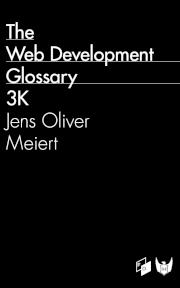Web Design and Principles
Published on January 30, 2015 (↻ July 11, 2024), filed under Development and Design (RSS feed for all categories).
This and many other posts are also available as a pretty, well-behaved ebook: On Web Development.
Web design has become complex. More people, more ideas, more use cases, more technical innovations, more design variations, &c. pp. More makes for more complex. The developers of us have already observed that with our standards.
But, there’s a life line helping us with this complexity, as well as trends. No, not differentiation. Principles. Web design principles.
There are principles for each subfield of web design: design itself with e.g. Fitt’s Law and Golden Ratio; typography with its traditions; usability with its conventions; accessibility with its heuristics; interaction design with its ground rules; web development with e.g. Don’t Repeat Yourself and Separation of Concerns; &c. pp.
Principles are a life line because they are simple (countering complexity) and don’t change that frequently (countering trends).
Centuries of typographic craft firmly root the designers and developers of content-rich websites, and our colleagues in usability and UX know the anchoring effect of principles, too: “A remarkable 80% of findings from the Web usability studies in the 1990s continue to hold today.” (Other people, like Jakob Nielsen, have more than once emphasized how little we change.)
Unfortunately, then, is this not a definite guide to web design principles (we should write one [edit: it seems Jeremy has just done that!]). It’s just a reminder that there are principles, and that they serve us, as web design experts and professionals, to counterweigh complexity and trends—and not be tossed around by them.
Many thanks to Daniela Strassberger for the inspiration for this post.
About Me

I’m Jens (long: Jens Oliver Meiert), and I’m a web developer, manager, and author. I’ve worked as a technical lead and engineering manager for small and large enterprises, I’m an occasional contributor to web standards (like HTML, CSS, WCAG), and I write and review books for O’Reilly and Frontend Dogma.
I love trying things, not only in web development and engineering management, but also in other areas like philosophy. Here on meiert.com I share some of my experiences and views. (I value you being critical, interpreting charitably, and giving feedback.)
Read More
Maybe of interest to you, too:
- Next: On Age
- Previous: Web Frameworks in a Nutshell
- More under Development or Design
- More from 2015
- Most popular posts
Looking for a way to comment? Comments have been disabled, unfortunately.

Get a good look at web development? Try WebGlossary.info—and The Web Development Glossary 3K. With explanations and definitions for thousands of terms of web development, web design, and related fields, building on Wikipedia as well as MDN Web Docs. Available at Apple Books, Kobo, Google Play Books, and Leanpub.
